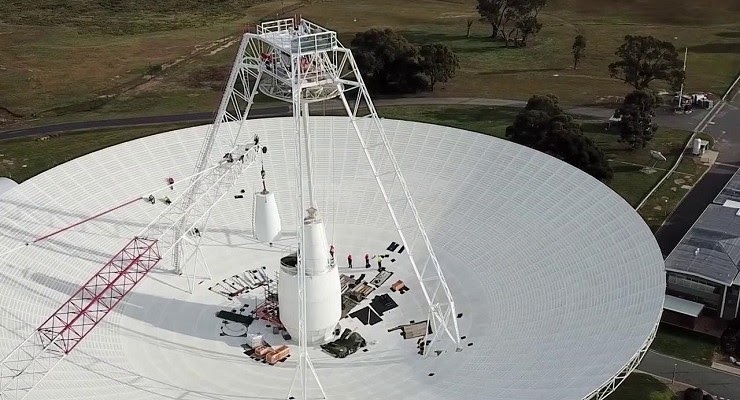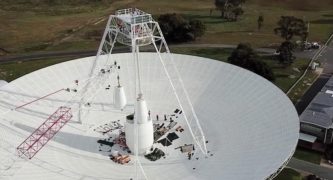
After nearly eight months of Voyager 2 flying through the cold depths of interstellar space on its own, scientists have sent commands to the spacecraft as they neared completion of upgrades and repairs to the lone 230-foot-wide radio antenna on Earth capable of delivering messages to the distant probe.
Voyager 2 is only the second manmade object to exit the Solar System, NASA’s Jet Propulsion Laboratory announced Monday.
JPL scientists successfully sent a command to Voyager 2 on Thursday using the massive radio dish known as Deep Space Station 43 in Canberra, Australia, the institution said in a written statement.
The antenna has been out of commission since March for vital upgrades, including the installation of a new transmitter, which hasn’t been replaced since before the spacecraft launched in 1977, according to JPL.
“Voyager 2 returned a signal confirming it had received the ‘call’ and executed the commands without issue,” according to the statement.
JPL Deep Space Network Project Manager Brad Arnold said the team was encouraged by the result.
“This test communication with Voyager 2 definitely tells us that things are on track with the work we’re doing,” he said.
But the upgrades aren’t finished. The antenna is expected to resume full operation in February.
“What makes this task unique is that we’re doing work at all levels of the antenna, from the pedestal at ground level all the way up to the feed cones at the center of the dish that extend above the rim,” Arnold said.
The massive antenna in Australia is one of three that make up NASA’s Deep Space Network, which it uses to communicate with distant spacecraft. The others are located in Gladstone, California, and Madrid, Spain.
Because Voyager 2 took a path sending it southward, relative to the plane of the planets, the Australia-based network is the only one capable of establishing a line of sight with the probe, according to JPL.
“Now more than 11.6 billion miles from Earth, the spacecraft is so far south that it doesn’t have a line of sight with radio antennas in the Northern Hemisphere,” the statement said.
Even while scientists have been unable to send commands to Voyager 2 in recent months, they were still able to receive signals from the probe as it continued sending back data from interstellar space, officials said.
The upgrades to the antenna will benefit other NASA missions, as well, including the Mars Perseverance Rover, slated to touch down on the Red Planet in February.
More information on Voyager 2 is available at nasa.gov/voyager.














 38 comments
38 comments


